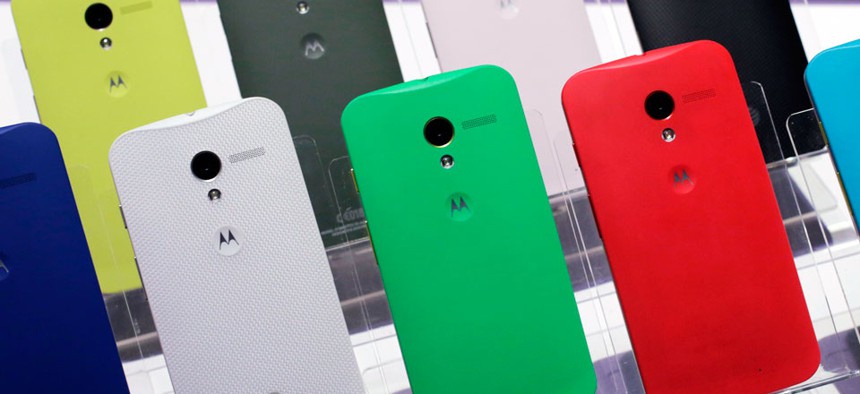Why Google Just Sold Motorola to Lenovo for $3 Billion

Motorola Moto X smartphones, using Google's Android software Mark Lennihan/AP
Google originally bought the company for $12.5 billion in May 2012.
Well this is unexpected. Google is selling Motorola, the iconic handset maker it bought for $12.5 billion in May of 2012, to Chinese PC maker Lenovo for $2.91 billion. Google CEO Larry Page has penned a short note about the sale, but he doesn’t get into details. Here’s why the deal makes sense.
Motorola was always an odd acquisition for Google; more than a year after the deal closed, analysts were still “scratching their heads” about what Google could have been thinking. It put Google in the awkward position of owning a company that competed with all of the other makers of Android smartphones. And while Google regularly protested that Motorola was just another partner, like all its other Android partners, it was a hard case to make given that Google installed one of its own,Dennis Woodside, as the CEO of Motorola. It was as if, at the height of the PC era in the mid 1990s, Microsoft had decided to undermine Dell and HP by buying Gateway and retooling it to selling Microsoft’s own PCs.
Aside from Motorola’s enormous trove of patents, which Google explicitly said at the time of acquisition were to be used to protect Android handset makers from being sued by Apple and Microsoft, the only reason for Google to buy Motorola was to transform it into a healthy counterweight to Samsung, which sells the overwhelming majority of Android smartphones. (Tellingly, Google is retaining the rights to Motorola’s patents, but will license them to Lenovo.)
And Google accomplished that. Motorola now makes one of the best, if not the best mid-range Android smartphone, the Moto X, along with its equally well-reviewed (and even cheaper) cousin the Moto G. But the Android phone hardware business resembles the PC business more every day. And margins in that business are brutal—after years of competition, they’re down to 2% to 3%.
What’s more, Google never ran Motorola with an eye toward profit. And given the recent fire-sale prices it’s been offering on the Moto X and G, ($70 discount on the former, half off on the latter) it’s clear that it’s always wanted to sell its Motorola-branded Android phones at the cheapest possible price, to get more people on Android, where they’ll use Google’s services, which is how Google actually makes money. Motorola has lost money for Google—hundreds of millions of dollars—every quarter it’s been on Google’s balance sheet.
From the consumer’s perspective, the way Google ran Motorola is the same model Google has used with its Google-branded tablets and other hardware, like the Nexus 7, which is built by its partner Asus and sells for less than half what the comparable retina iPad mini retails for. Google is like Amazon; the company is willing to break even on hardware in order to increase the market share of its money-making services.
It might seem like Google is taking a $10 billion bath on the sale of Motorola to Lenovo. But Motorola has already helped Google save what could amount tobillions of dollars on its taxes, which softens the blow. And there’s another way to look at this: Google has created a competitor to Samsung that is headed by an ex-Googler (for now) that will now go to a company, Lenovo, that has proved itself quite capable of succeeding in the low-margin hardware business. Lenovo is the #1 seller of PCs in the world by volume, and it’s also just taken on IBM’s low-end server business.
Yes, it costs Google billions of dollars to make the Android hardware ecosystem more diverse, but even if that wasn’t Google’s plan all along, it could in the end be worth the cost. Samsung, after all, is nervous enough about its dependence on Google that it’s trying to incubate its own smartphone operating system, called Tizen.


